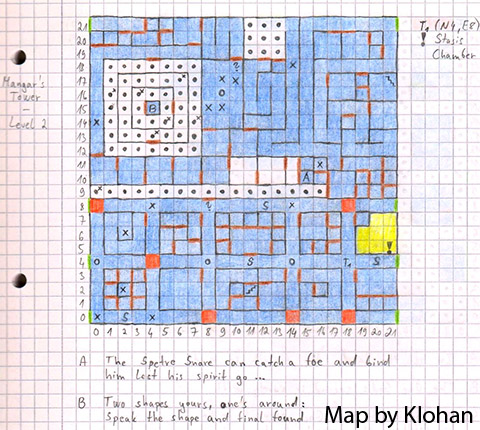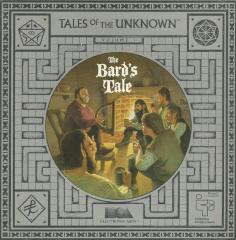
When The Bard's Tale by Michael Cranford was first released, it foreshadowed a feature that would become standard in games today—an intro. In the case of The Bard's Tale, it was an animated title screen that was reminiscent of a cartoon, showing a bard playing a song.
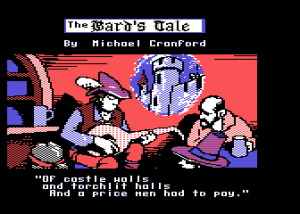
Naturally, the lyrics of the song appeared as text only on the screen but this was pretty impressive stuff in 1987 on the C64! The bard would stop playing to take a sip from his mug once in a while. One of the listeners sitting next to him would imagine the adventurous scenes portrayed in his odes, appearing and disappearing in graphics bubbles above his head.
One of the interesting and often overlooked things about The Bard’s Tale is that its character system was actually pretty similar to that of D&D. So in many ways, it probably served as an inspiration for the SSI Gold Box games, considering that the games play similarly.
The innovation that Pool of Radiance added, though, was the combat screen. The Bard’s Tale still had its combat still fought out in a text form, via a list of the monsters versus a list of your party members. The individual combat events as characters and monsters took stabs at each other were displayed as a log-style scrolling text in a window on the screen. There was no moving around, no graphics—just an exchange text blows.
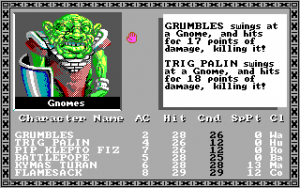
The Bard's Tale also had no map screen, so, like in the Wizardry games, you had to make your own maps if you didn’t want to get lost—or persuade someone else at school to let you copy his. A funny note: More than 30 years later, Brian Fargo's inXile entertainment is creating the fourth part of The Bard's Tale and the question of automapping pops up again.
What made the game stand out in our memory was the actual bard class in the game—the bard’s songs were essential to solving some of the puzzles in the game. And playing any song would actually play a little tune in the game. Most of the songs represented what we call buffs today, such as the one song that would reduce the armor class, and so forth. A small icon appeared next to the image of the person or the affected enemy as an indicator of the respective effect. It was pretty cool.
In addition to these songs, The Bard’s Tale also had an intriguing magic system that actually involved the player directly. Unlike in modern games where you simply select a spell without any actual intellectual input from the player, in The Bard's Tale you had to enter a four-letter code combination to cast a spell. This meant you had to memorize the actual spell codes, such as D-E-S-T for the Death Strike. This was cool. It required the player to think and to get involved. Imagine playing easy-peasy Skyrim and you'd actually have to memorize and enter the shouts… I am telling you, once you had all the spells in the game safely stowed in your brain, you actually began to feel like a real wizard! Expecto Patronum! Take that, Harry Potter!
So which part of all of this served as an inspiration for us? We wanted to make sure Realms Beyond would contain a character class or a particular skill set that is actually necessary to solve a puzzle… or two… or even more. Not only do we think it is a nice game feature, but it will also help to have a wider spread of characters in your party, and ensure that players put together their character parties not entirely with combat in mind.
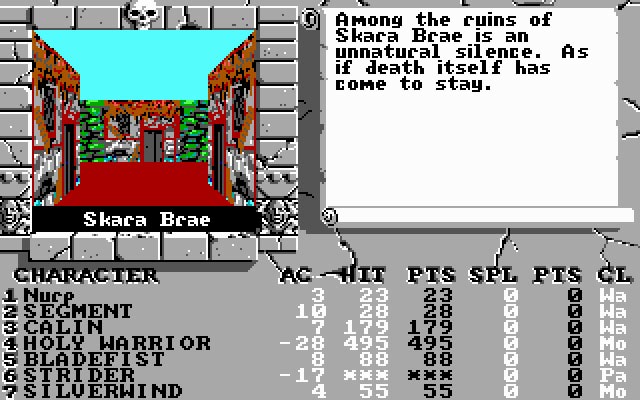
We sometimes forget, but The Bard’s Tale contained quite a few interesting puzzles that you had to figure out in order to advance. It wasn't your typical run-of-the-mill stuff all the time. Any kind of information you uncovered could be important. As a result, players were also heavy note-takers, and not a word was lost on the player.
The game featured five dungeons and they sort of built upon each other. In order to succeed and advance through a dungeon, you had to have finished the previous one because you needed information or a specific item that was found there. It also contained something that has been entirely eradicated from modern games—dead ends. That's right. The game featured areas were you simply had to accept the fact that you would not be able to defeat this nasty Soul Sucker and that you'd better back off. And in case you didn’t back up your character disc, you'd better remember not to mess with him the next time you came around. Unfortunately for the Soul Sucker, however, backtracking is also a key feature in the game, and getting back to that SOB was a really satisfying memory…
